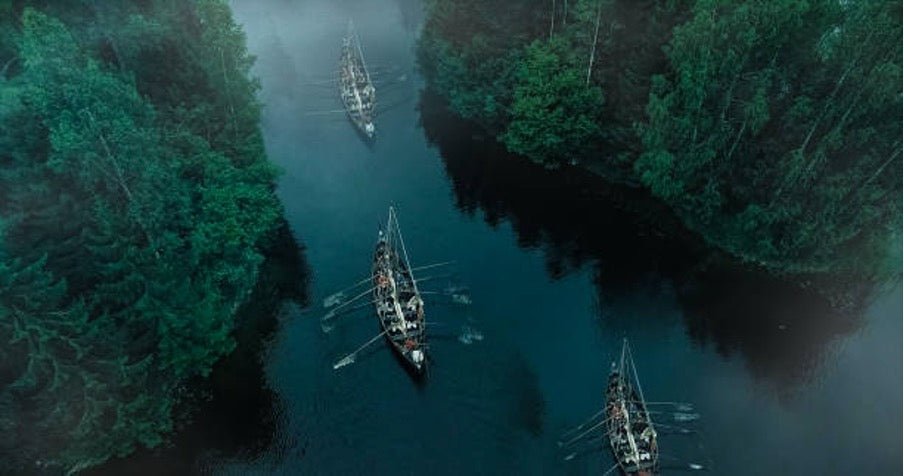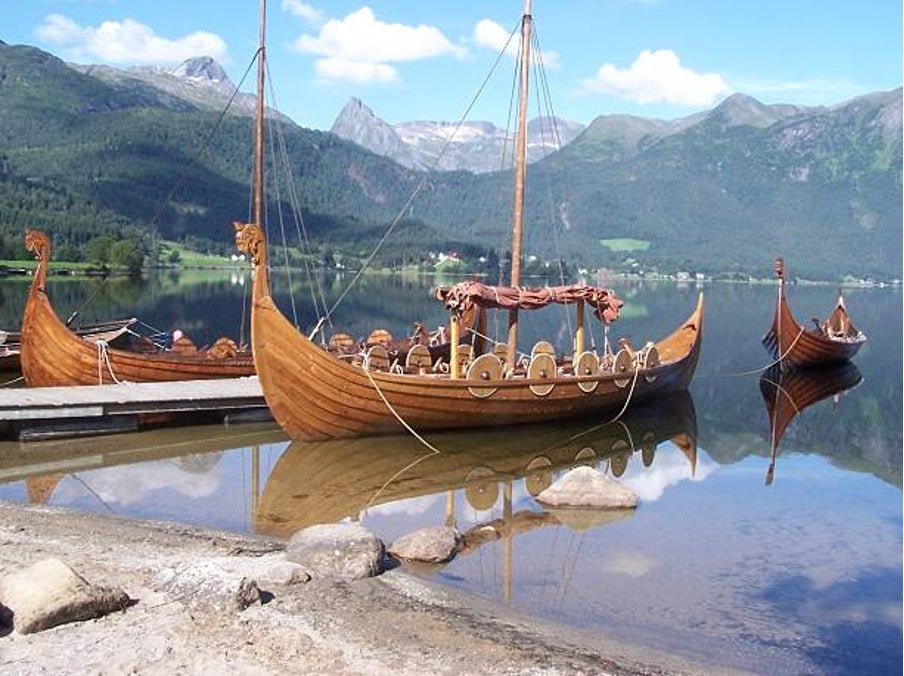Viking Longships: All you need to understand

< img src=" https://everythingviking.com/wp-content/uploads/2023/04/viking-archeology-viking-longships.jpg "alt =" Viking Longships on the Sea- Sunset" width= "600 "> As outstanding seafarers, raiders, explorers, and merchants, much of the Vikings’ legacy today would not have been possible without the help of longships. The longship was the secret to the Vikings ‘success: the tool with which they became one of the dominant forces from the Arctic Ocean to the Caspian Sea. Even to this day the longship is one of the most recognisable symbols of mediaeval Nordic civilisation, adorning whatever from business logo designs to city shields. How much do we know about these remarkable vessels and how are we able to separate the mythological from the historical? Well, thanks to some extraordinary historical sources and historical finds written by both Vikings and their contemporaries, historians have actually been
able to piece together an
picture of how longships were made, what they were utilized for and the location they kept in Viking society. The Anatomy of a Longship Let’s begin by speaking about what longships are and how they vary from any other kind of vessel utilized by the Vikings and their contemporaries. Archaeologists know they have actually discovered a ‘real Longship ‘when it’s at least five times as long as it is large and has both a mast to install a sail and rows of benches for a group of oarsmen. They’re thin and typically long, with a shallow hull and a totally in proportion bow and stern. These ships were built utilizing the clinker technique, which had been used in Scandinavia given that the 6th century. This method reduces the internal framing of a ship by developing the hull from overlapping
wood planks and filling the gaps with a mixture of tar and animal, wool or moss hair. Archaeologists have discovered evidence of long, narrow ships being utilized in Scandinavia as early as the fourth century BCE, so why do we speak about’ True Longships’ emerging in the 9th century, around the dawn of the Viking age? Crucially, those earliest ships didn’t integrate making use of wind and oar power, indicating that they didn’t have the speed and dexterity that offered the Vikings such a maritime advantage over other civilisations of their day. Ships dating from prior to the 6th century likewise utilize a range of structure techniques instead of being strictly clinker-built, suggesting that they were heavier and had less capacity for manoeuvrability.

The Secret to the Vikings’ Success< img src= "https://everythingviking.com/wp-content/uploads/2023/04/viking-archeology-viking-longships-4.jpg "alt =" Viking Longships on a River" width=" 600" > Whatever about the longship was developed to help with nimble, vibrant movement through the water. Though other civilisations of the day also utilized clinker-built, longship-type vessels, the capability of Viking longships to move so exactly around a headland or navigate deep inland through a river system offered the Vikings a clear advantage over their neighbours. Integrating 2 techniques of wind, propulsion, and workforce, implied that a longship might take a trip at 5-10 knots( 9.3-18.5 kmph) in average conditions, and might even reach speeds of up to 15 knots( 28 kmph) in beneficial conditions. This raw speed integrated with the manoeuvrability used by the in proportion style, which permitted longships to change direction at a minute’s notice,

indicated that Viking raiding groups could approach a coastal settlement quickly and from an obscured angle so that they would not be right away identified.< img src =" https://everythingviking.com/wp-content/uploads/2023/04/viking-archeology-viking-longships-5.jpg "alt=" Viking Longships Sailing on the Ocean" width=" 600" > Another crucial benefit used by the longship’s design was the shallow hull, really little of which ever dipped below the waterline. This implied that Viking seafarers might cruise incredibly near to the coast and even make beach launches and landings. The ability to traverse shallow waters also allowed Vikings to browse inland through river systems, which contributed in spreading out Scandinavian influence across Europe. Throughout the 9th century, Viking raiders sailed entire fleets of longships deep into the collapsing Frankish empire and assaulted abundant, inland cities including Rouen, Paris, and Hamburg. The capability to sail down rivers likewise opened up rewarding trading possibilities to the East. Viking merchants utilized the Dnieper River to cruise from the Baltic Sea
all the way to Constantinople where they traded a variety of products including honey and furs. They likewise laid siege to the city two times, initially in 860 and later in 907, but in basic the relationship between the Vikings and Byzantium was friendly and mutually advantageous. Different Ships for Various Uses Naturally, as versatile as a single longship could be, you could not anticipate there to be one standardised model intended to be utilized in whatever from fishing expedition to sea fights. Archaeologists have determined several types of longships, characterised mainly by size, which would have performed really different functions in Viking society. The tiniest ‘True Longship ‘is called a Karvi. With just 13 rowing benches, this would have been utilized as a general-purpose vessel for fishing and small-scale trade, though it might have been commissioned for military use to transport additional materials or workforce. The Snjekka, a slightly larger variety with upwards of 20 rowing benches, is believed to have actually
been the most typical type of Viking vessel and would have been used often in battle. It’s said that King Cnut took control of Norway with the help of 1200 of these ships in 1028. A longship numbering over 30 benches is called a Sneid, indicating’ slider.’ These were big, powerful vessels, used for cruising fars away overseas. Their hulls were still shallow enough that the boat could be cruised up onto land, permitting crews to pitch tents for the night, but on journeys through open waters the sail might be taken down over the walls, giving the oarsmen some cover while they slept on the decks. The largest longship ever discovered, the Roskilde 6, was a Sneid, counting a remarkable 39 benches and necessitating 78 oarsmen and 1 cox. The last kind of longship is called a Drakkar or Dreki. Actually suggesting ‘Dragon,’ these longships counted over 30 benches and were elaborately carved and painted, typically with a dragon or snake stumbling out of the bow. No such ship of this kind has ever been uncovered by archaeologists;

however, they are
explained in numerous historic sources that

historians think the legendary Drakeship is more than simply legend.< img src= "https://everythingviking.com/wp-content/uploads/2023/04/viking-archeology-viking-longships-6.jpg" alt =" Viking Longships -Moored" width=" 600" >